Entropy, information and Ludwig Boltzmann. 11th Ludwig Boltzmann Forum 20 February 2019
Gerhard Fasol, Eurotechnology Japan KK, Founder and CEO. Guest Professor, Kyushu University. Former tenured faculty at Cambridge University and Tokyo University, Past Fellow Trinity College Cambridge.
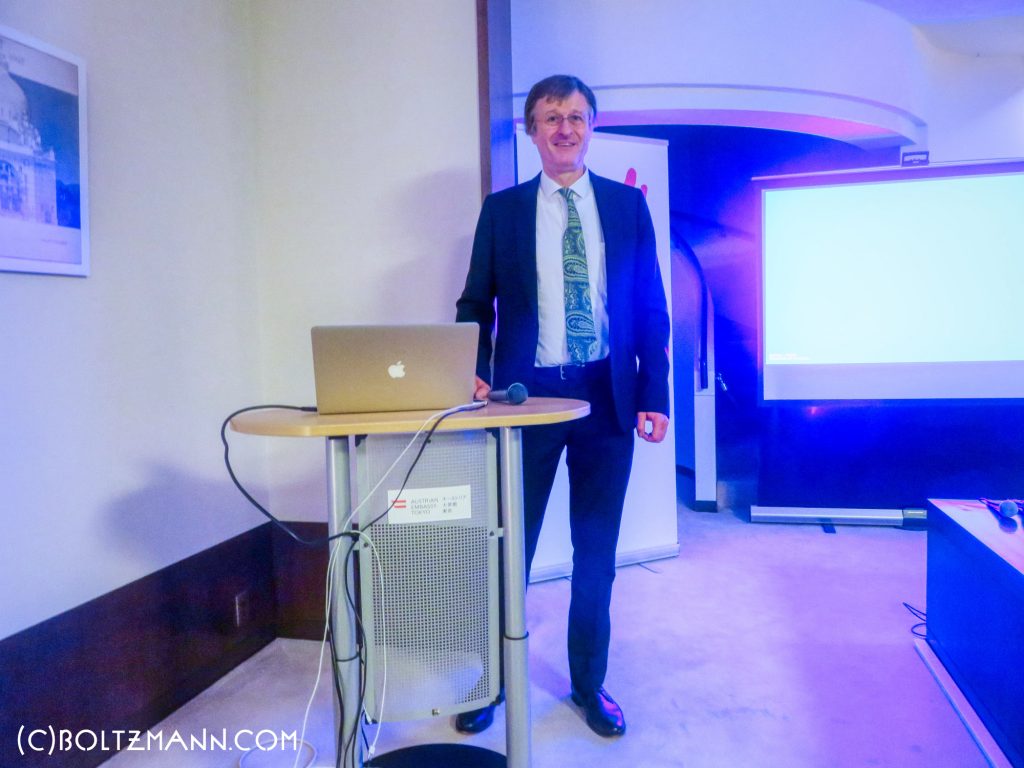
Agenda of the 11th Ludwig Boltzmann Forum
Purpose of the Ludwig Boltzmann Forum is to bring outstanding leaders in different areas, technology, science, medicine, business, finance together to create new ideas, new research, new business, new initiatives. Over the last 10 Ludwig Boltzmann Forum conferences we have created many new partnerships in this way.
Some participants – also here today – have told me that they know of no better forum in Japan to freely discuss ideas and exchange views.
Today Noriko Osumi (Vice-President of Tohoku University) will show us results of her genetic research concerning autism. Neurological disorders are sometime coupled with fantastic creativity in the same person, and Ludwig Boltzmann may be an example. Takaaki Kajita (Nobel Prize in Physics 2015) will explain his discovery of neutrino oscillations and how it is linked to our understanding of the origin of our universe. Hiroshi Nakamura (Board Director and General Manager for R&D Innovation at NTT DOCOMO) will show us what 5G mobile communications mean for us users, and how important partners are to bring 5G to market. Peter Zoller (Director at the Institute for Quantum Optics and Quantum Information at the University of Innsbruck) will explain his work on optical quantum computing and how quantum computing can create new levels of computation and secure data transmission. Gerhard Fasol (Eurotechnology Japan KK and Guest Professor at Kyushu University) will explain some of Ludwig Boltzmann’s work, and why we use his results and tools every day in our lives and work, and what we can learn from Ludwig Boltzmann today.
Physicist. Mathematician. Philosopher. Leader. Venture investor (in aircraft research)
I am creating and developing the Ludwig Boltzmann Forum as a platform for leaders, driving improvements based on logic and science and mathematics – inspired by Ludwig Boltzmann: physicist, mathematician, philosopher, leader and venture investor – Ludwig Boltzmann was a venture investor in aircraft research and experimentation at a time when it was not yet clear whether air travel will be with balloons, zeppelins, bird like flapping wings, air-screws or other devices.
Inspire leaders by Ludwig Boltzmann’s example. Honesty, humility, asking profound questions and working towards answers using logic, mathematics, science – understanding nature and systems, and creating new tools to solve practical problems.
We use Ludwig Boltzmann’s results every day
S = k log W – Ludwig Boltzmann linked the macroscopically defined Entropy, which was introduced from work to optimize steam engines for the first industrial revolution, to the statistical mechanics of molecules and thus also to information theory. Boltzmann’s statistically defined Entropy was rediscovered independently by Shannon, and is fundamental to understand information moving through “channels” including the internet.
For his work, Ludwig Boltzmann was proposed many times (1903, 1905, three times in 1906) for the Nobel Prize, but died in 1906 before any potential Nobel Prize could have been decided for him.
Ludwig Boltzmann started early: published his first work in 1865 at the age of 21
Boltzmann’s first published work is entitled “Über die Bewegung der Elektrizität in krummen Flächen” (Electricity on curved surfaces), published in 1865 at the age of 21. About 20% of Boltzmann’s work is about electro-magnetism. It was the time when Maxwell created Maxwell’s equations in 1861-1862. It is also the time when electricity started to replace gas and steam engines. Tokyo Dentou KK received the license to produce and sell electricity in Tokyo on 15 February 1883.
Ludwig Boltzmann’s teachers and the “reversibility paradox”
Ludwig Boltzmann studied in the midst of a very active physics school in Vienna. Among his teachers where Josef Loschmidt, who proposed structures for 300 chemical compounds including benzene, who determined the number of gas molecules in a unit volume, today called the Loschmidt constant, and Jozef Stefan, who was the first to determine the temperature of the sun, and created what is known today as the Stefan -Boltzmann Law together with his student Ludwig Boltzmann. Josef Loschmidt conflicted with Ludwig Boltzmann and challenged him with the “reversibility paradox”: how can completely reversible microscopic laws, based on Newton’s laws, cause irreversible macroscopic phenomena as expressed by the Second Law of Thermodynamics, which says that an isolated system spontaneously evolves to the state of greatest entropy – but never reverses to lower entropy, (at least not within finite time).
The mechanical meaning of the Second Law of Thermodynamics
Important research starts by asking the right questions. Ludwig Boltzmann asked how the Second Law of Thermodynamics is linked to mechanics of particles. He published one of his most important publications at the age of 22 in 1866 “Über die mechanische Bedeutung des zweiten Hauptsatzes der Wärmetheorie” (About the mechanical meaning of the second law of thermodynamics), linking the macroscopically defined Entropy – a quantity created to improve the design of steam engines – to the microscopic statistical mechanics of molecules. Thus Ludwig Boltzmann created some of his most important work at the age of 22.
Boltzmann’s transport equations and optimal transport
The French mathematician Gaspard Monge started the field of optimal transport in the year 1781.
Monge worked for the French military on a very important problem: given a number of quarries at different locations, and the need to build a number of fortifications at other locations, what is the optimal way to transport sand and rocks from the quarries to the building sites for these fortifications.
Boltzmann created what is today called “Boltzmann’s transport equations” to calculate how particles (molecules or atoms) forming a gas move from one particular state to another. Taking into account the statistical nature of this problem, Boltzmann” transport equations are partial differential equations for the density in location and momentum space.
Boltzmann’s transport equations today are used in a wide are of applications from electrons in semiconductor electronic devices to the design of aircraft wings and racing cars.
Optimal transport results are used for many modern big data applications, image processing and many more, and two Fields Medals have been awarded:
- Cédric Villani, Fields Medal 2010 “for his proofs of nonlinear Landau damping and convergence to equilibrium for the Boltzmann equation”
- Alessio Fialli, Fields medal 2018 “for his contributions to the theory of optimal transport, and its application to partial differential equations, metric geometry, and probability”
What can we learn from Ludwig Boltzmann?
There is much to learn from Ludwig Boltzmann far beyond the enormous impact his scientific work has on our daily lives and on the daily work of every engineer, physicist, scientist.
- empower young people, recognize and support talent early:
- LB published his first scientific work at age 21 – I am sure that should be possible today also (also I am ashamed to say my own first scientific publication was published when I was 24 years old)
- LB became Full Professor at 25
- Head of Department at 32
- President of University at 43
- talent is not linear, its exponential
- move around the world. Connect. Interact.
- Empower women
- Don’t accept authority for authority’s sake
- science/physics problems need to be treated with the methods of physics/science
- no dogmas
- support entrepreneurs (LB supported aircraft developers before it was clear which technology will win: flapping wings? balloons? Zeppelins?)
Summary
Boltzmann’s thoughts and ideas are a big part of our understanding of the world and our universe.
His results and mathematical tools are used every day by today’s engineers, bankers, IT people, physicists. The definition of 1 degree Kelvin/Celsius/Fahrenheit with which we measure temperature since 2018 is directly via Boltzmann’s constant k.
Ludwig Boltzmann stood up for his ideas and conclusions and did not give in to authority.
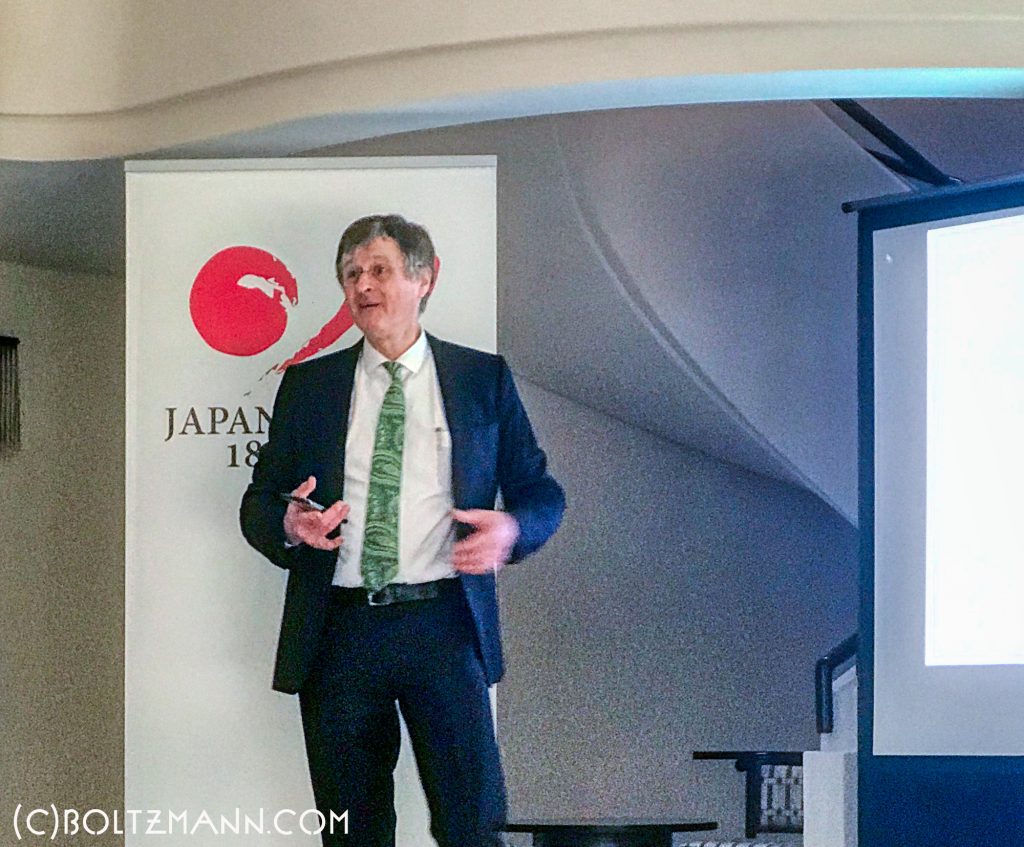
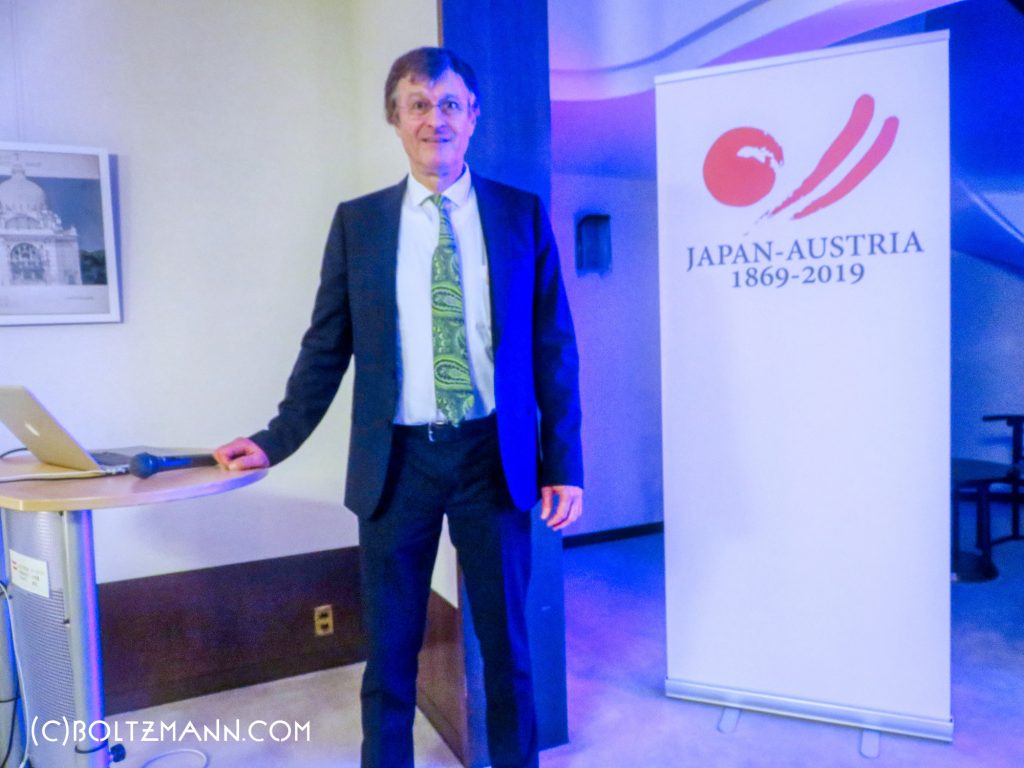
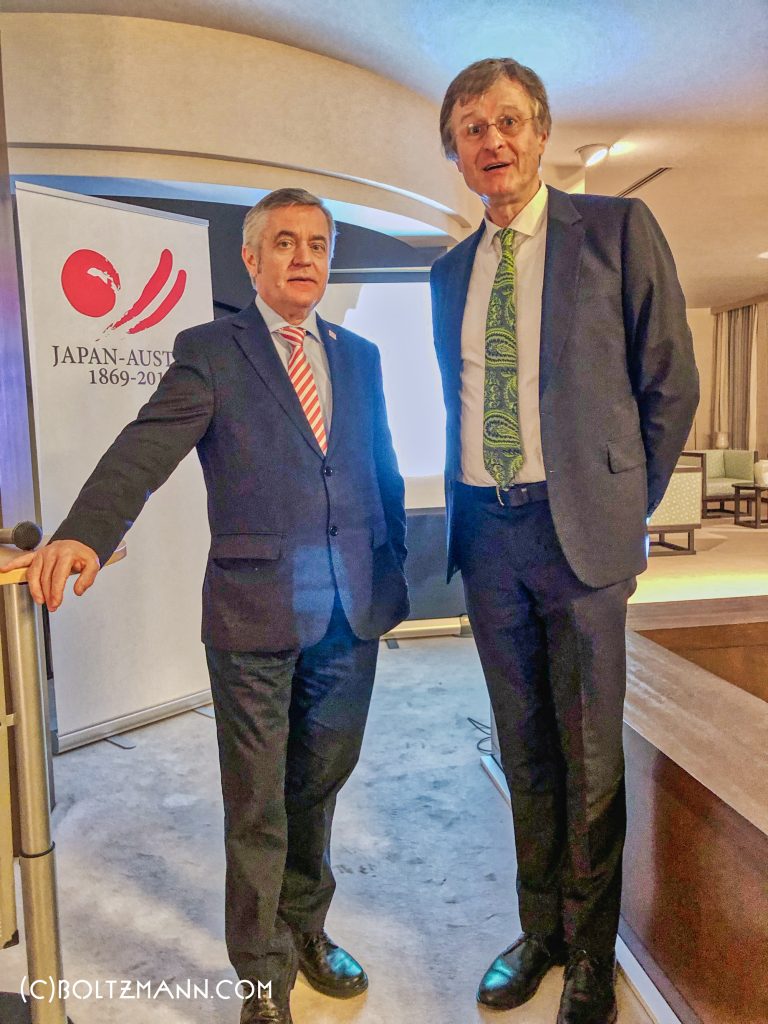
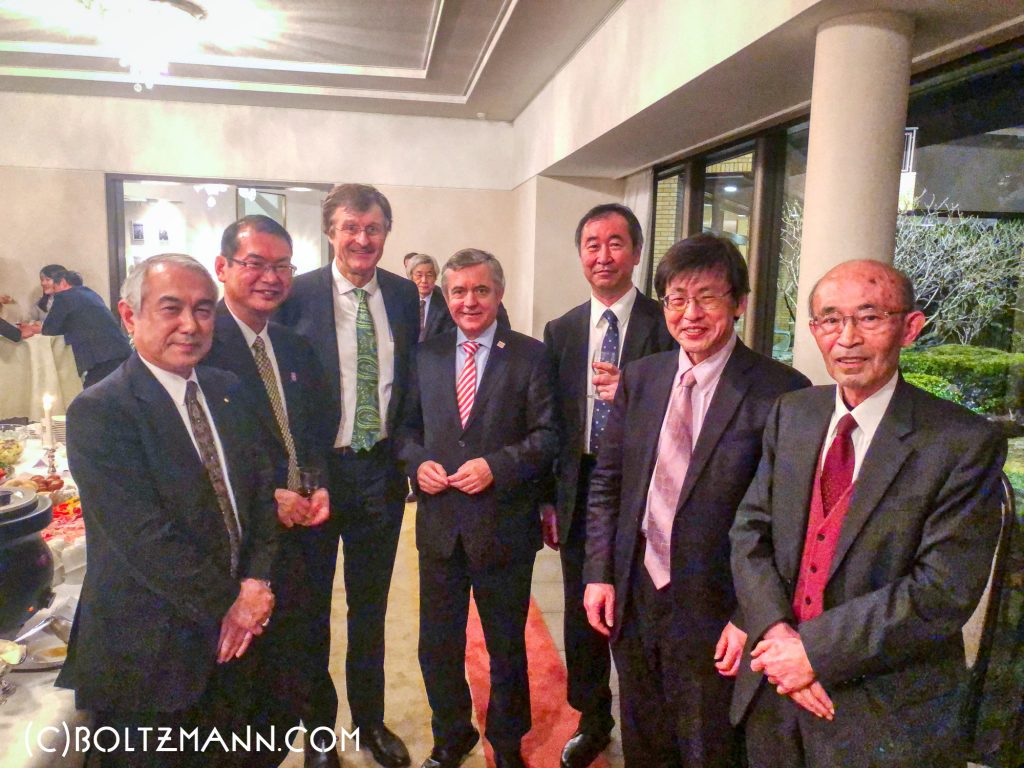
Copyright (c) 2019 Eurotechnology Japan KK All Rights Reserved
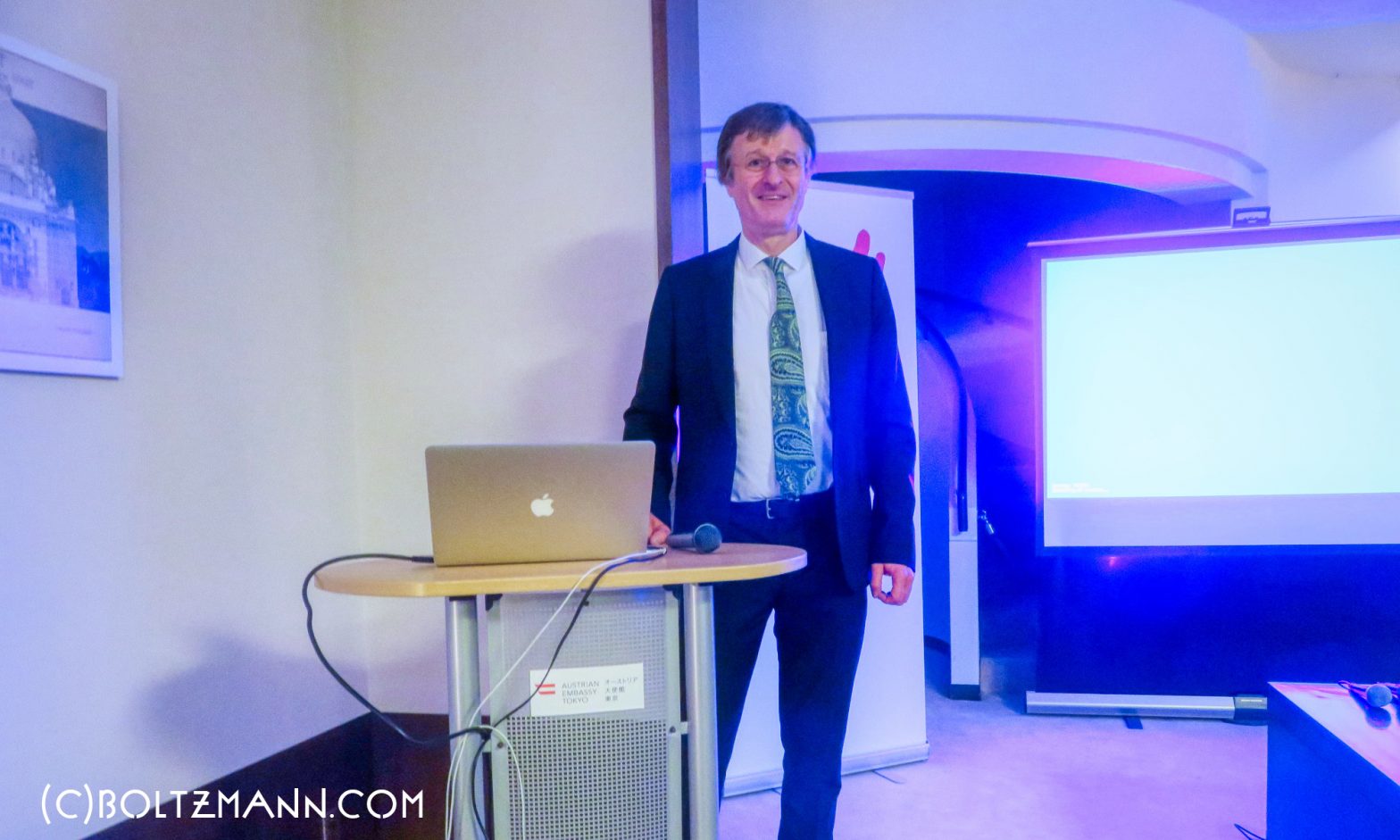
Leave a Reply